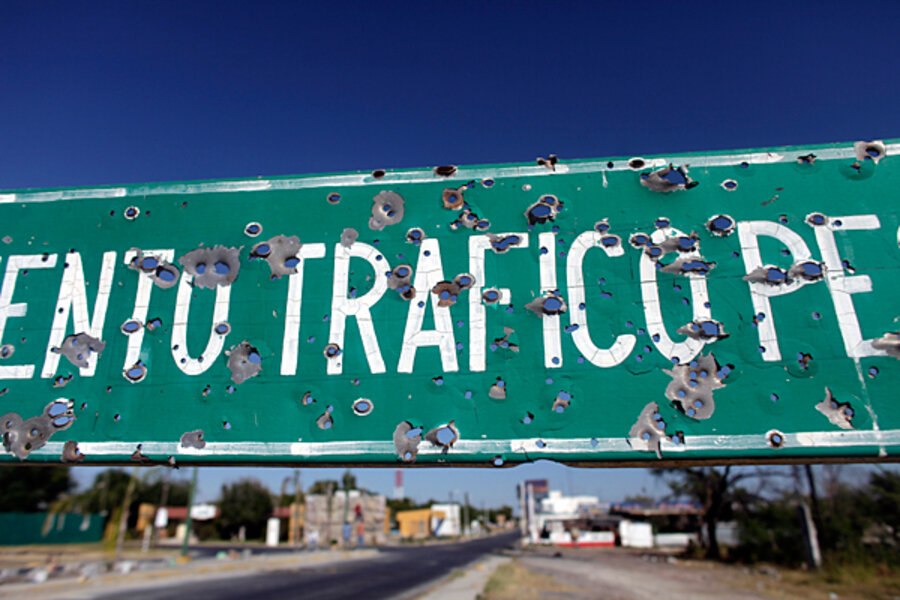As Mexico's traffickers ship drugs north, they leave addicts in their wake
Loading...
| Mexico City
Exponential growth in the trafficking of drugs through Mexico – destined for the large consumer market to the north – is leaving a growing number of addicts in its wake.
Heroin, crack cocaine, and methamphetamines were once unheard of in Mexico, but today rehabilitation centers are filled with addicts. Being the top supplier of illegal drugs to the US has made Mexico a consumer nation, too, as cartels have sought to expand the local market over the past decade.
Illegal drug use in Mexico – still well below levels in the United States – rose 87 percent between 2002 and 2011, according to the latest national survey of addictions. In the survey, 1.5 percent of respondents reported having consumed illegal substances in the previous year, compared with 0.8 percent in 2002. And drug rehabilitation professionals caution that higher levels of use may exist, given that the data is self-reported. They also note that an alarming increase in drug use among women and adolescents between 2002 and 2008 has persisted, although the survey suggests overall illegal drug use has plateaued since 2008.
“The reality is that … in the organizations and institutions that work directly with this population, we see that [addiction] is on the rise, and that the adolescents who come here are younger and younger,” says Blanca Ferreyra, who coordinates addiction treatments at the Love Life Foundation, a Mexico City nonprofit. “By 14 years old, they’ve got a two- or three-year-old addiction.”
That wasn’t always the case. A decade ago, drug rehabilitation professionals say they mostly attended to older patients whose addictions began in their 20s, and tobacco, alcohol, and marijuana were the most common drugs. Although these substances are still the most prevalent, today more young people are beginning with crack or inhalants – cheap, extremely addictive, and increasingly accessible.
Guava-scented inhalants
In a facility painted bright yellow with a grassy inner courtyard, the Love Life Foundation attends to young addicts remitted by Mexico City’s juvenile justice system. A dozen doctors, psychiatrists, and therapists treat about 120 adolescents a year, as well as their families.
Dr. Lorena López Ordaz, the foundation director, says youth addictions in Mexico City can be spawned by a number of factors, including less parental involvement and overcrowded classrooms.
“There is a decomposition of the social fabric [in Mexico],” she says.
And readily available drugs – Cocaine, crack, marijuana – are filling the void. In the capital, at-risk youth may start out on cheap inhalants like paint thinner and glue or, increasingly, a certain type of cement, which pushers are now providing with the scents of popular fruits like guava and tamarind, both to mask the smell and attract young consumers.
Although traditionally associated with kids living on the street who use them to stave off hunger, inhalants are being used by a broader range of young people, not just those living in poverty. In Mexico City, 45 percent of the 12- to 14-year-olds who had used a controlled substance in the last year had used inhalants.
“Before it wasn’t so easy to find these substances,” Dr. López says. “Now you can find anything in any little corner store,” she explains, suggesting that dealers are everywhere.
Treatment according to income
Unlike the wealthy who can afford a 45-day treatment at a private residential clinic – which costs between $3,500 and $16,000 – the families who arrive at Love Life have fewer options. The city government subsidizes treatment there, which lasts anywhere from 15 days to nine months, depending on court orders.
An untold number of “annexes” – informal, unregulated treatment centers – popped up in Mexico in the past decade as the problem grew beyond the state’s ability to handle it. These centers, run without licenses or oversight, are known to use physical and psychological violence during treatment and until recently, when the federal government began to wake up to the problem, were among the few options for people with limited funds.
These, as well as many formal treatment centers, have historically been geared toward treating men, and have not kept pace with the growth in female drug and alcohol abuse, leaving women with few treatment options.
Faced with the increasing drug use and hoping to dampen the fallout of a bloody drug war, the federal government began betting on prevention and rehabilitation in 2007. The addictions survey, funded and executed by the health ministry, concludes that prevention and education campaigns – including the opening of more than 300 government-run “New Life” treatment centers across the country – helped stem the growth in drug abuse from 2008 to 2011. The New Life centers focus on prevention and early interventions.
Border region troubles
Mexico’s north has the country's highest rate of drug abuse, at 2.3 percent, according to the addictions survey, and its levels of heroin and methamphetamine use are also the highest in the country. Heroin production by Mexican criminal organizations tripled between 2004 and 2012, according to the Global Commission on Drug Policy, and some of what’s headed for the US market inevitably gets left behind in northern Mexico.
In northern Baja California, Sonora, Chihuahua, and Coahuila – all states bordering the US – “there is more heroin consumption because it can be found cheaper,” says Salvador Canovas Stone, director of therapy at Mexico City’s private Clinica Ajusco. Mr. Stone notes that a dose costing $32 in Mexico City goes for just $4 up north, close to the US border.
Substance abuse may have recently held steady, as the addictions study shows, but numbers aren’t going down – and likely won't, unless Mexico's drug trafficking organizations cede their role as suppliers.
As Mr. Canovas says, “the problem is still there.”






